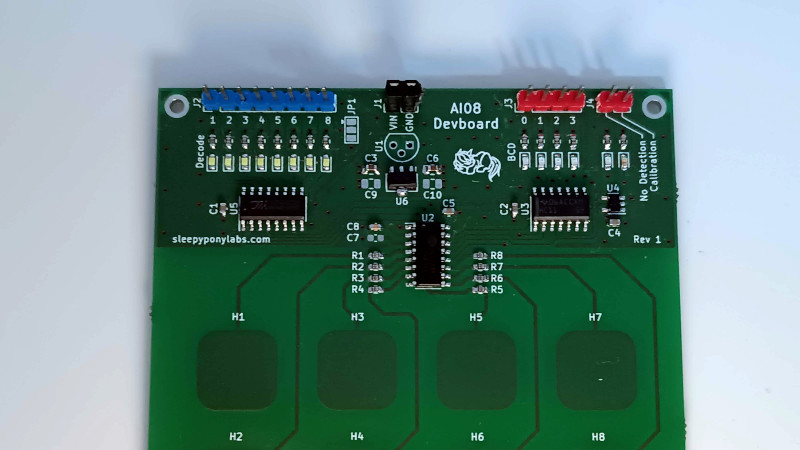In the catalogue of the Chinese parts supplier LCSC can be found many parts not available from American or European suppliers, and thus anyone who wants to evaluate them can find themselves at a disadvantage. [Sleepy Pony Labs] had just such a part catch their eye, the Sam&Wing AI08 8 channel capacitive touch controller. How to evaluate a chip with little information? Design a dev board, of course!
The chip tested is part of a family all providing similar functionality, but with a variety of interface options. The part tested has eight touch inputs and a BCD output. Said output is used to feed a 74 series decoder chip and drive some LEDs. The touch pads were designed with reference to a Microchip application note which incidentally makes for fascinating reading on the subject as it covers far more than just simple touch buttons.
Whether or not you’ll need this touch chip is a matter for your own designs, however, what this project demonstrates is that with the ready availability of cheap custom PCBs and unexpected parts it’s not beyond reason to create boards just for evaluation purposes.
Perhaps the subject of a previous Hackaday piece would have found this board useful.















AI08 & AI08B, what’s the difference? Both datasheets are 100% in Chinese :-(
From what I gathered, the AI08B does not have sleep mode and auto calibration mode while the AI08 does.
Lots of modern microcontrollers have inputs that support capacitive input sensing. I also like the TTP223 family of sensors that can even work through wood and other insulators. Or maybe use a optical gesture sensor if the application fits its use case?
Pretty much any modern microcontroller supports capacitive input sensing due to the use of CMOS circuitry.
This paper explains in detail how to do capacitive sensing using only the digital I/O pins of a CMOS microcontroller. https://merl.com/publications/docs/TR2002-21.pdf
The technique is quite robust and sensitive.
Here’s one way grandad implemented touch switches, as used in PAiA’s Programmable Drums, circa 1975.
http://www.paia.com/talk/download/file.php?id=175
The parts count is a bit higher…. clever design though.